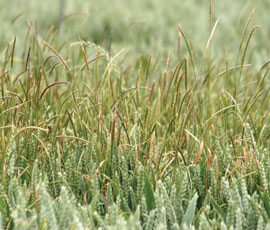Cereals 2013: Time to turn up the heat on blackgrass

Blackgrass and slug populations are two major challenges for establishing winter cereals on heavy soils in the UK and the banning of straw buring could be to blame, say agronomists.
With increased resistance to herbicides and no new active ingredients on the horizon, alongside increasingly stringent stewardship of products such as metaldehyde, how long can growers sustain viable crop populations in areas where these two problems exist at such high levels?
The pressure on agronomists to protect the active ingredients currently available to growers through rotation, stacking of products, increased adjuvant use and greater use of cultural techniques is massive, says the Association of Independent Crop Consultants.
“This season particularly, we are seeing crops in many areas of the UK that are suffering and having to be re-drilled and even destroyed through the lack of control now afforded.
“However, this was never the case before the banning of straw burning in 1993,” says AICC CEO Sarah Cowlrick.
At this year’s Cereals event in June, AICC is looking to engage with the whole industry in calling for a review on the practice and implications of straw/stubble burning.
“Our aim is to open up the debate around the possibility of bringing back burning, whether that be under licence after proven need, or the option of controlled back burning,” she says.
“It is time to revisit the research of the environmental impact of burning when weighed against the possible reduction in pesticide use, for example burning will break dormancy of blackgrass to maximise the efficacy of a stale seed-bed. There are also benefits gained from disease reduction as well as the carbon footprint of burning versus agchem applications,” she says.
To this end, the AICC has established four plots, two each of winter wheat and winter oilseed rape. Resistant blackgrass was spread on all of the plots to simulate an in-field situation. Post-emergence herbicide treatments will have been applied on both the wheat and rape plots to mirror typical on-farm practice. Following this, cereal straw will be burned on one of the wheat and one of the rape crops to demonstrate the effects of burning.
The wheat plots will also allow for the comparison of an SDHI fungicide programme versus a triazole-based programme.
The straw burning debate is the topic one of the Cereals Technical Workshops at the event. For more information, go to the Cereals website – www.cerealsevent.co.uk – or visit our Cereals event page

